Garry Nelson's Left Foot
Well-known member
Group D. The final group. We are looking for pound for pound hardness. Relative strength, aggression, hardiness are all valid aspects of hardness. Simply being bigger or smaller isn't. Make your case, argue well, this is, on paper, a tough group. We've seen with the tabby cat progressing and former champ Hippo currently struggling to progress that anything can happen. Don't leave it to chance. Make your vote count and get behind your champion. Photos and videos are, as always, welcome and encouraged.
So, without any more waffle, lets meet the ten combatants of WHC VIII Group D:
Bengal Tiger
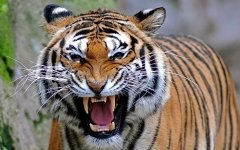
This grand beast has never made much of a splash in this tournament but with the unexpected success of his little brother in Group, he must feel that anything is possible and that this could be his breakout year. This fast, athletic, powerful beast stalks its prey from the side before exploding onto its victim, its powerful jaws clamping around the throat of its prey, its teeth crushing the neck and throat. The Tiger then drags the carcass off into cover before stripping the dead beast to the bone. It usually preys on large ungulates such as chital, sambar, gaur, and to a lesser extent also barasingha, water buffalo, nilgai, serow and takin. They have also been known to take other predators, such as leopards, wolves, jackals, foxes, crocodiles, Asiatic black bears, sloth bears, and dholes. On very rare occassions they've been noted to attack adult elephants and rhinoceros's.
http://en.wikipedia.org/wiki/Bengal_tiger#Hunting_and_diet
Cassowary
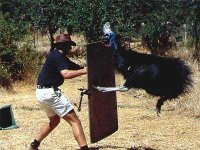
This large, slightly menacing looking flightless bird has a loyal fanbase in the WHC competition. Often threatens to do well but has never got past the quarter finals. Perhaps this is the year that his tournament will finally take flight(excuse the pun)? The Cassowary is a generally shy creature but if cornered or provoked it will go on full out attack. It can run at speeds of 31mph and can jump 1.5metres launching a vicious kick at its intended victim. If the kick connects the victim is not only at threat from the force of the kick but from the dagger like middle toe which is a 5inch long dagger-claw.
http://en.wikipedia.org/wiki/Cassowary#Behaviour_and_ecology
Mantis Shrimp
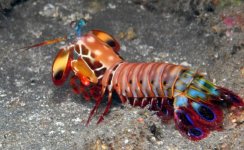
Here he is, the sensation of WHC VII and the reigning champion. At first glance the Mantis Shrimp might not look a likely champion of this fine competition but a little research shows you what a formidable beast he is. Only 30cm long this colourful sea monster possesses some remarkable weapons. He can be split into two types, depending on his claws: spearer or smasher. Both claws are used in the same way, unleashed at devastating speed (23 metres per second) creating a force of some 1500newtons with which they hit their prey. This hit by itself is enough to smash or eviscerate its prey, but just incase it doesn't, the speed with which they strike creates a cavitation bubble between their claw and the surface it is about to strike. When this cavitation bubble collapses just after the strike it creates a shockwave of such power that this alone is enough to kill the victim. A side effect of this is the collapsing bubble creates sonoluminescence which produces a flash of light and intense heat. Think about that for a moment. A 30cm shrimp hits with such force it creates a death dealing shockwave and light and intense heat. The larger of these beasts are able to break the glass of an aquarium with one strike. Will be a major shock if it doesn't at least progress from the group, but stranger things have happened...
http://en.wikipedia.org/wiki/Mantis_shrimp#Claws
Cape Buffalo

I'll be honest I've got a soft spot for this WHC journeyman. Never in with a realistic shot at the title he turns out year after year and puts up a solid fight. A big, sturdy, muscular, and large, if strangely, behorned beast the Cape Buffalo plies its trade in the African savannah, rubbing shoulders with all of the big boys of the region and generally holding its own. It is capable of defending itself against Lions who usually need two or more to take down one C.B. Crocodiles, too, as a rule stay away from healthy adult cape buffalos, although when push comes to shove comes to fight to the death...
Despite being a herbivore the Cape Buffalo is regarded as one of the 'big five' for hunters who have nick named it “The Black Death” or “widowmaker” due to its aggressive behaviour when pushed into a fight, goring or killing over 200 eople a year. They have been known, when wounded, to turn the tables on their pursuers by ambushing and attacking them.
http://en.wikipedia.org/wiki/African_buffalo
Black Mamba
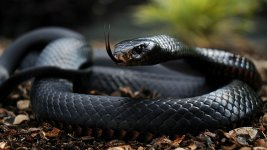
The second former champion in Group D, the Black Mamba took the WHC crown back in 2012. Lightening fast, volatile, aggressive and possessing the most evolved and efficient venom apparatus and deliverance system of any snake in the world the Black Mamba is unsurprisingly the most feared snake in Africa. It's venom can kill a healthy adult human in as little as 20 minutes. If untreated a bite from a black mamba will prove fatal in close to 1000% of cases.
http://en.wikipedia.org/wiki/Black_mamba
Mosquito
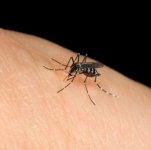
Regularly nominated the mosquito normally fails to progress from the group stages. Maybe this year will be different but its difficult to see it being anything other than a makeweight in this tough group. The little blood sucking bugger is responsible for the deaths of one million people a year.
A fearsome statistic at first but in terms of this competition a little delving into the facts renders it less impressive. The deaths are caused by the mosquito passing on infectious diseases borne in their saliva from one person to another. Is it enough to see the mosquito out of this group and into the knock out rounds?
http://en.wikipedia.org/wiki/Mosquito#Disease
Hawaiian Centipede

The first of two debutants in Group D. t might struggle to progress from such a tough group without strong championing but it should put up a good showing whatever the result. Wikipedia states that 'it is among the largest centipedes with a maximum length of 20 cm. They are active and aggressive, preying on almost everything that they can overwhelm.' Which is a great starting point for this competition. It strikes by holding its prey with its two front legs before biting behind its victims head, shooting its powerful venom into it. It then holds the body of the prey with the remainder of its legs ensuring the poor beast can't get away. In a fight 'the centipede will use its entire body coiling the prey or enemy with its legs firmly attaching to the body of the opponent. Then, it will quickly penetrate its forcipules into the victim for venom injection'.
http://en.wikipedia.org/wiki/Scolopendra_subspinipes
Tardigrade

Ah, the Tardigrade. These tiny, tiny little things(just 0.5mm when fully grown) have just one string to their bow. But what a string it is! Basically, they can survive in just about any environment imaginable. They are fine in any temperature ranging from just above absolute zero to well over boiling point. How about atmospheric pressure? no problem..as well as being able to cope with the vacuum of outer space they can also cope with pressure six times that found in the deepest ocean trenches. Ionizing radiation? no sweat. They can take levels of radiation hundreds of times higher than what would obliterate a human. They can also survive without food or water for a decade...
They don't have any weapons, they dont get in fights, they're not aggressive but they are indestructible. If thats your definition of hard then vote this hardy little survivalist into the knock out rounds.
http://en.wikipedia.org/wiki/Tardigrade
Lion

This regal looking beast is the king of the jungle. Even though he doesn't live there. One of the most recognisable animals in the world the Lion is an apex predator, although they usually hunt in packs rather than on their own. Frankly despite being beautiful looking beasts and having plenty in their lockers to make them genuine challengers they're a little bit of a flat track bully, preying on medium sized beasts such as wildebeest, zebras, buffalo and warthogs while avoiding the bigger, stronger beasts like fully grown adult elephants, most adult hippopotamuses and rhinoceroses. That said, I wouldn't mess with one. Do they float your boat enough to vote them through? You decide.
http://en.wikipedia.org/wiki/Lion#Hunting_and_diet
Wild Goat
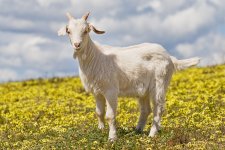
The second debutant in Group D. Wikipedia gives me nothing to work with here. By rights should struggle massively to get even one vote. No doubt it'll get significantly more. If you honestly think the goat is harder than all but three other competitors in this group then maybe this competition isn't for you. That said, its been nominated so here it is.
http://en.wikipedia.org/wiki/Wild_goat
So, without any more waffle, lets meet the ten combatants of WHC VIII Group D:
Bengal Tiger

This grand beast has never made much of a splash in this tournament but with the unexpected success of his little brother in Group, he must feel that anything is possible and that this could be his breakout year. This fast, athletic, powerful beast stalks its prey from the side before exploding onto its victim, its powerful jaws clamping around the throat of its prey, its teeth crushing the neck and throat. The Tiger then drags the carcass off into cover before stripping the dead beast to the bone. It usually preys on large ungulates such as chital, sambar, gaur, and to a lesser extent also barasingha, water buffalo, nilgai, serow and takin. They have also been known to take other predators, such as leopards, wolves, jackals, foxes, crocodiles, Asiatic black bears, sloth bears, and dholes. On very rare occassions they've been noted to attack adult elephants and rhinoceros's.
http://en.wikipedia.org/wiki/Bengal_tiger#Hunting_and_diet
Cassowary

This large, slightly menacing looking flightless bird has a loyal fanbase in the WHC competition. Often threatens to do well but has never got past the quarter finals. Perhaps this is the year that his tournament will finally take flight(excuse the pun)? The Cassowary is a generally shy creature but if cornered or provoked it will go on full out attack. It can run at speeds of 31mph and can jump 1.5metres launching a vicious kick at its intended victim. If the kick connects the victim is not only at threat from the force of the kick but from the dagger like middle toe which is a 5inch long dagger-claw.
http://en.wikipedia.org/wiki/Cassowary#Behaviour_and_ecology
Mantis Shrimp

Here he is, the sensation of WHC VII and the reigning champion. At first glance the Mantis Shrimp might not look a likely champion of this fine competition but a little research shows you what a formidable beast he is. Only 30cm long this colourful sea monster possesses some remarkable weapons. He can be split into two types, depending on his claws: spearer or smasher. Both claws are used in the same way, unleashed at devastating speed (23 metres per second) creating a force of some 1500newtons with which they hit their prey. This hit by itself is enough to smash or eviscerate its prey, but just incase it doesn't, the speed with which they strike creates a cavitation bubble between their claw and the surface it is about to strike. When this cavitation bubble collapses just after the strike it creates a shockwave of such power that this alone is enough to kill the victim. A side effect of this is the collapsing bubble creates sonoluminescence which produces a flash of light and intense heat. Think about that for a moment. A 30cm shrimp hits with such force it creates a death dealing shockwave and light and intense heat. The larger of these beasts are able to break the glass of an aquarium with one strike. Will be a major shock if it doesn't at least progress from the group, but stranger things have happened...
http://en.wikipedia.org/wiki/Mantis_shrimp#Claws
Cape Buffalo

I'll be honest I've got a soft spot for this WHC journeyman. Never in with a realistic shot at the title he turns out year after year and puts up a solid fight. A big, sturdy, muscular, and large, if strangely, behorned beast the Cape Buffalo plies its trade in the African savannah, rubbing shoulders with all of the big boys of the region and generally holding its own. It is capable of defending itself against Lions who usually need two or more to take down one C.B. Crocodiles, too, as a rule stay away from healthy adult cape buffalos, although when push comes to shove comes to fight to the death...
Despite being a herbivore the Cape Buffalo is regarded as one of the 'big five' for hunters who have nick named it “The Black Death” or “widowmaker” due to its aggressive behaviour when pushed into a fight, goring or killing over 200 eople a year. They have been known, when wounded, to turn the tables on their pursuers by ambushing and attacking them.
http://en.wikipedia.org/wiki/African_buffalo
Black Mamba

The second former champion in Group D, the Black Mamba took the WHC crown back in 2012. Lightening fast, volatile, aggressive and possessing the most evolved and efficient venom apparatus and deliverance system of any snake in the world the Black Mamba is unsurprisingly the most feared snake in Africa. It's venom can kill a healthy adult human in as little as 20 minutes. If untreated a bite from a black mamba will prove fatal in close to 1000% of cases.
http://en.wikipedia.org/wiki/Black_mamba
Mosquito

Regularly nominated the mosquito normally fails to progress from the group stages. Maybe this year will be different but its difficult to see it being anything other than a makeweight in this tough group. The little blood sucking bugger is responsible for the deaths of one million people a year.
A fearsome statistic at first but in terms of this competition a little delving into the facts renders it less impressive. The deaths are caused by the mosquito passing on infectious diseases borne in their saliva from one person to another. Is it enough to see the mosquito out of this group and into the knock out rounds?
http://en.wikipedia.org/wiki/Mosquito#Disease
Hawaiian Centipede

The first of two debutants in Group D. t might struggle to progress from such a tough group without strong championing but it should put up a good showing whatever the result. Wikipedia states that 'it is among the largest centipedes with a maximum length of 20 cm. They are active and aggressive, preying on almost everything that they can overwhelm.' Which is a great starting point for this competition. It strikes by holding its prey with its two front legs before biting behind its victims head, shooting its powerful venom into it. It then holds the body of the prey with the remainder of its legs ensuring the poor beast can't get away. In a fight 'the centipede will use its entire body coiling the prey or enemy with its legs firmly attaching to the body of the opponent. Then, it will quickly penetrate its forcipules into the victim for venom injection'.
http://en.wikipedia.org/wiki/Scolopendra_subspinipes
Tardigrade

Ah, the Tardigrade. These tiny, tiny little things(just 0.5mm when fully grown) have just one string to their bow. But what a string it is! Basically, they can survive in just about any environment imaginable. They are fine in any temperature ranging from just above absolute zero to well over boiling point. How about atmospheric pressure? no problem..as well as being able to cope with the vacuum of outer space they can also cope with pressure six times that found in the deepest ocean trenches. Ionizing radiation? no sweat. They can take levels of radiation hundreds of times higher than what would obliterate a human. They can also survive without food or water for a decade...
They don't have any weapons, they dont get in fights, they're not aggressive but they are indestructible. If thats your definition of hard then vote this hardy little survivalist into the knock out rounds.
http://en.wikipedia.org/wiki/Tardigrade
Lion

This regal looking beast is the king of the jungle. Even though he doesn't live there. One of the most recognisable animals in the world the Lion is an apex predator, although they usually hunt in packs rather than on their own. Frankly despite being beautiful looking beasts and having plenty in their lockers to make them genuine challengers they're a little bit of a flat track bully, preying on medium sized beasts such as wildebeest, zebras, buffalo and warthogs while avoiding the bigger, stronger beasts like fully grown adult elephants, most adult hippopotamuses and rhinoceroses. That said, I wouldn't mess with one. Do they float your boat enough to vote them through? You decide.
http://en.wikipedia.org/wiki/Lion#Hunting_and_diet
Wild Goat

The second debutant in Group D. Wikipedia gives me nothing to work with here. By rights should struggle massively to get even one vote. No doubt it'll get significantly more. If you honestly think the goat is harder than all but three other competitors in this group then maybe this competition isn't for you. That said, its been nominated so here it is.
http://en.wikipedia.org/wiki/Wild_goat
Last edited:

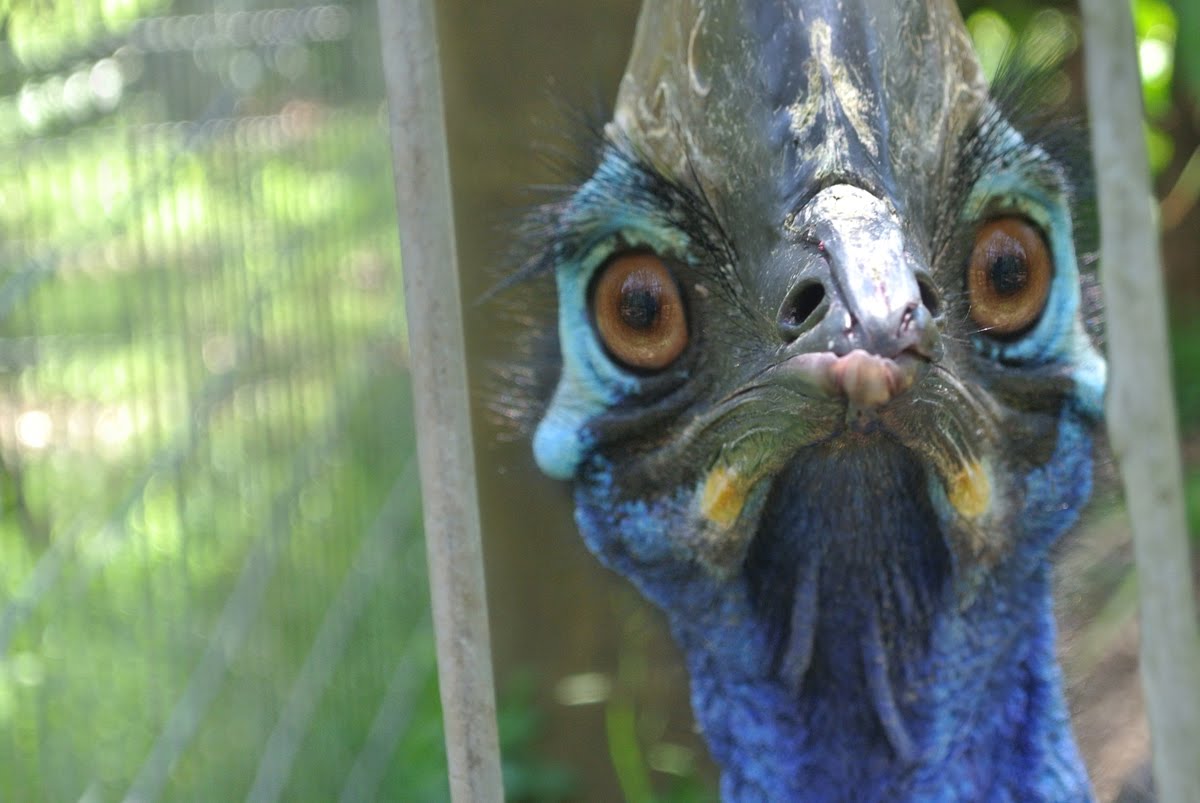
 That's swung it for me.
That's swung it for me.

